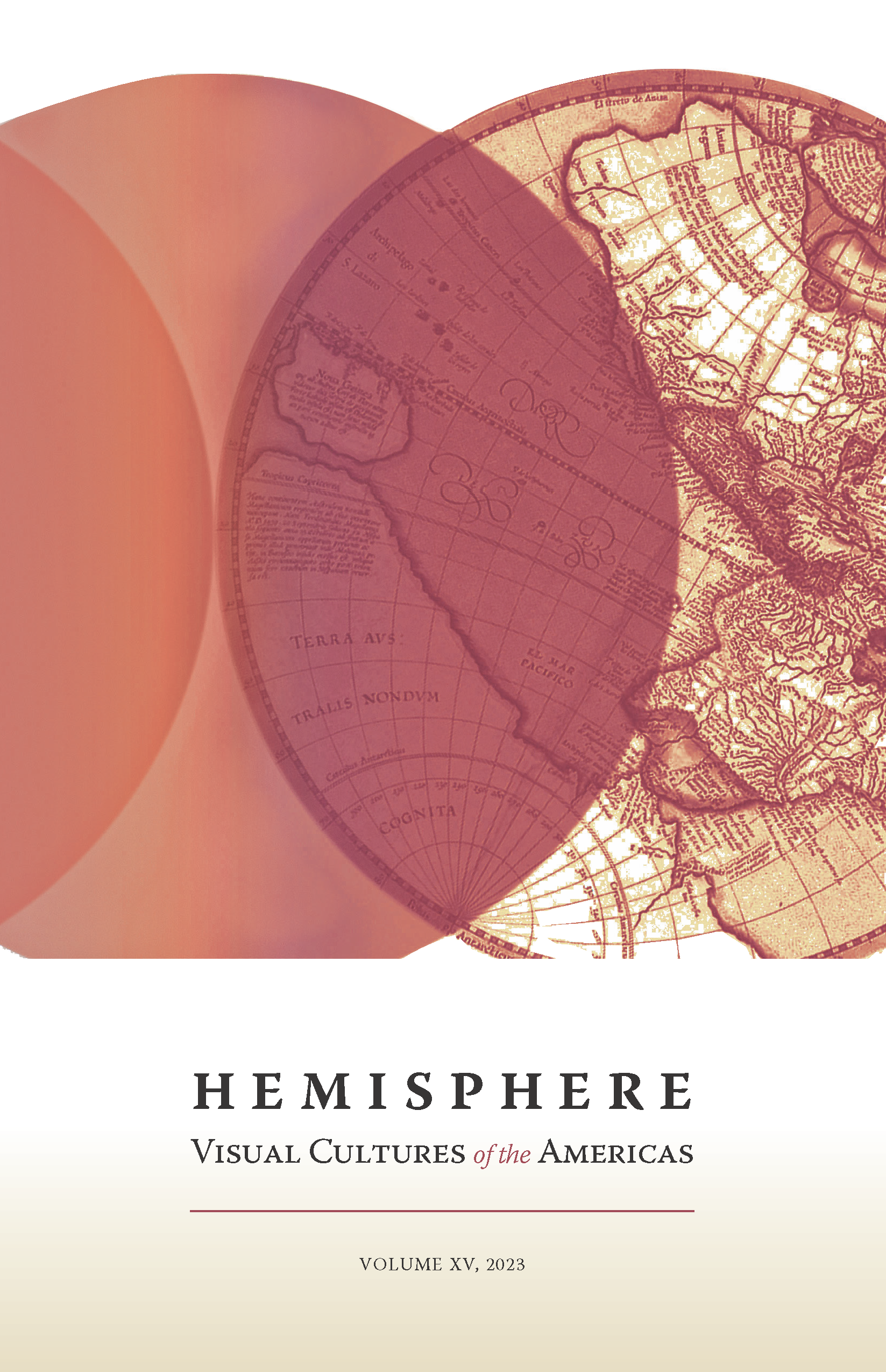Volume 15, Issue 1 (2023)
Introduction
The fifteenth volume of Hemisphere: Visual Cultures of the Americas brings together articles that address the topic of visual and material communication in the Americas, as well as papers that discuss art that emulates or draws inspiration from those traditions. Indigenous artists in North, South, and Central America are part of a long tradition of graphic communication that conveys information through the use of imagery, pictography, codified signs, operational notation, semasiography, and glyphic writing. Visual culture that communicates and records concepts, histories, narratives, and geographies are common throughout the Americas beginning during the ancient period and extending to contemporary popular culture.
Examples of Indigenous visual communication includes Moche ceramics, Maya sculpture, Mixtec manuscripts and maps, North American hide painting and ledger art, and Inka khipus. Modern and contemporary artists such as Sandy Rodriguez, Joaquin Torres Gonzalez, and Cecilia Vicuna emulate and draw inspiration from these traditions. This journal seeks to highlight, first, art and visual/material cultures originating in the Americas and to place this body of work in conversation with the larger global narrative of Art History, and also to provide a forum for and promote graduate student research.
The articles in this volume address the central theme by exploring topics that span the millennium. Catherine Nuckols’ essay, “Sun Gods and Forest Figures: Duality and Complementarity in Copán Stela D’s Full-Figure Inscription” examines Maya full figure glyphs in Copan’s Stela D, highlighting how Maya art and writing are one in the same. In “The Wild Child of the Soil: The Symbol of the Datura Plant in Southwestern Art, from Ancient Native American Cultures to Georgia O’Keeffe,” Adrian Butler offers a survey of the depiction of Datura, also known as Jimsonweed, in the Southwest over hundreds of years. Like Butler, Jacki Putnam examines the work of artists from the twentieth century in “Reframing Knowledge, Reenacting Myth, and Remapping Identity: Photographic Interpretations of Mesoamerican Codices.” Her article looks at the work of three photographers, all working in the 1980s, who drew inspiration from Mesoamerican codices. Each article approaches the theme in different and exciting ways.
We include a book review by M.A. Student, Madison Garay of Denise Low and Ramon Powers, Northern Cheyenne Ledger Art by Fort Robinson Breakout Survivors (2022) and an interview conducted by Ph.D. Candidate, Breanna Reiss with Ancient American art historian and Art Institute of Chicago curator, Andrew Hamilton, which explores his career as an art historian and his interest in Indigenous arts and visual communication. For the Artist Spotlight, we are pleased to feature Rosalba Breazeale (MFA, UNM 2022), who references her Indigenous Peruvian heritage in her work and draws inspiration, in part, from Andean khipus.
We are grateful for all of the hard work of our associate editors, faculty advisors, and most importantly, the authors who contributed to Hemiphere’s XV volume. We hope you find this issue of interest.
Entire Issue
Front Matter
Contents
Articles
Editor’s Introduction to Volume XV: The Question of Visual Communication and Writing in the Americas
Beth Wilson Norwood
Sun Gods and Forest Figures: Duality and Complementarity in Copán Stela D’s Full-FigureInscription
Catherine Nuckols
Nothing Comes from Nothing: Photographic Re-Interpretations of Mesoamerican Codices
Jacki Marie Putnam
Artist Spotlight
Rosalba Breazeale

